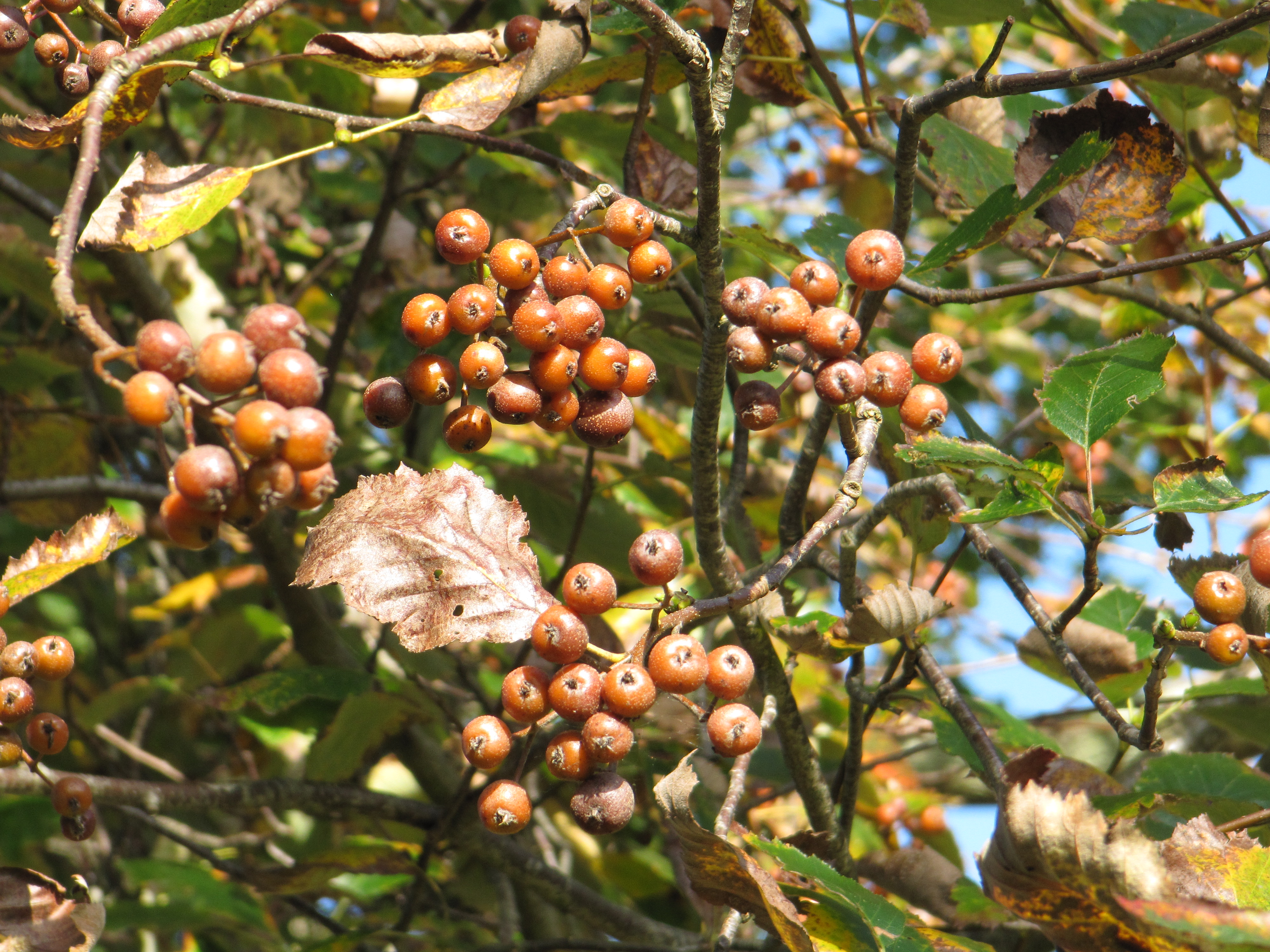Sorbus devoniensis on:
[Wikipedia]
[Google]
[Amazon]
''Karpatiosorbus devoniensis'' is known by the English name of Devon whitebeam and formally as Broad-leaved Whitebeam. When the fruit was reported as sold at Barnstaple Pannier Market the name French Eagles was used, apart from 1929 when they were reported as eagle-berries. When the trees were reported as seen growing wild on botanical walks they were referred to as French Hails (once each as French hail and French Hales). Broad-leaved white-beam, which was the common name until Devon Whitebeam took over, was used once in 1907. The term ''Otmast'' was used once as a pet name, as its true identity was not known. It is a species of whitebeam, trees and shrubs in the family

Rosaceae
Rosaceae (), the rose family, is a medium-sized family of flowering plants that includes 4,828 known species in 91 genera.
The name is derived from the type genus ''Rosa''. Among the most species-rich genera are ''Alchemilla'' (270), ''Sorbus ...
. It is endemic to the British Isles, growing wild in areas of Devon, Cornwall, Somerset and south-east Ireland as a native and north-east Ireland as an introduction.
It probably did not exist before the last ice age, arising from a hybrid
Hybrid may refer to:
Science
* Hybrid (biology), an offspring resulting from cross-breeding
** Hybrid grape, grape varieties produced by cross-breeding two ''Vitis'' species
** Hybridity, the property of a hybrid plant which is a union of two dif ...
between ''Sorbus torminalis'' the wild service tree and another whitebeam. It is a close relative of the No Parking whitebeam, ''Karpatiosorbus admonitor'', and two other British natives and around 40 species in Europe.
Description
It will form a deciduous tree to about 12 metres height. The leaves are entire, lobed, dark green above, the underside has a dense layer of grey hairs. It flowers at the end of May, they are white with 5 petals. The fruits ripen at the end of October. They are orange-brown to brown, and edible.
Locations found
* along the River Taw and River Torridge * Roborough Down nearPlymouth
Plymouth () is a port city and unitary authority in South West England. It is located on the south coast of Devon, approximately south-west of Exeter and south-west of London. It is bordered by Cornwall to the west and south-west.
Plymouth ...
is where the type specimen was taken
* Little Haldon, at Bishopsteignton along the Postman's Path
* Boyton, Cornwall
Boyton ( kw, Trevoya) is a civil parish and village in Cornwall, England, United Kingdom. It is situated close to the River Tamar and the border with Devon about six miles (10 km) north of Launceston. According to the 2001 census it had a ...
* South East and North East Ireland (rarely)
* Halsdon Nature Reserve near Great Torrington managed by the Devon Wildlife Trust - a small tree
* Uppacott Wood Nature reserve between Barnstaple
Barnstaple ( or ) is a river-port town in North Devon, England, at the River Taw's lowest crossing point before the Bristol Channel. From the 14th century, it was licensed to export wool and won great wealth. Later it imported Irish wool, bu ...
and Bideford also managed by the Devon Wildlife Trust, has a few trees
* Watergate Bridge near Great Torrington, grid ref SS468175 (questionable as bright red berries). The plant growing on the old platform has been removed
* Leigh Cross
Zeal Monachorum (; Latin translation ''Cell of the Monks'') is a village and civil parish in the Mid Devon district of Devon, England, about north-west of Exeter, situated on the River Yeo. According to the 2001 census it had a population o ...
, Zeal Monachorum
* Watergate, Horwood
* Washington Park Arboretum
Washington Park is a public park in Seattle, Washington, United States, most of which is taken up by the Washington Park Arboretum, a joint project of the University of Washington, the Seattle Parks and Recreation, and the nonprofit Arboretum Fo ...
in Seattle, WA, USA. Some plants in cultivation are incorrectly named so this should be verified
* Between Martinhoe and Lynton in heath and woodland. Importantly not in the East Lyn valley as those plants are Sorbus admonitor
References
{{Taxonbar, from1=Q41521690, from2=Q5479345 Trees of the United Kingdom devoniensis Endemic flora of the United Kingdom Taxobox binomials not recognized by IUCN